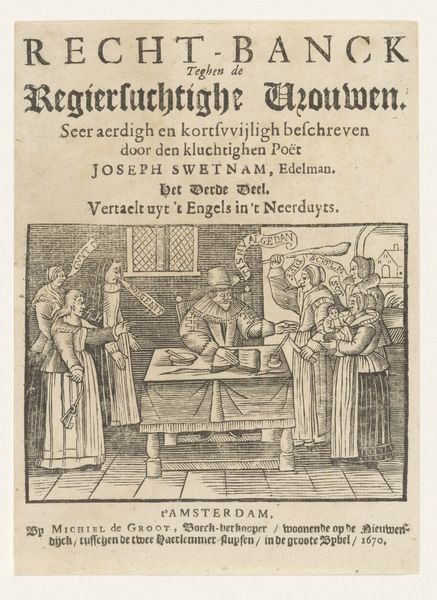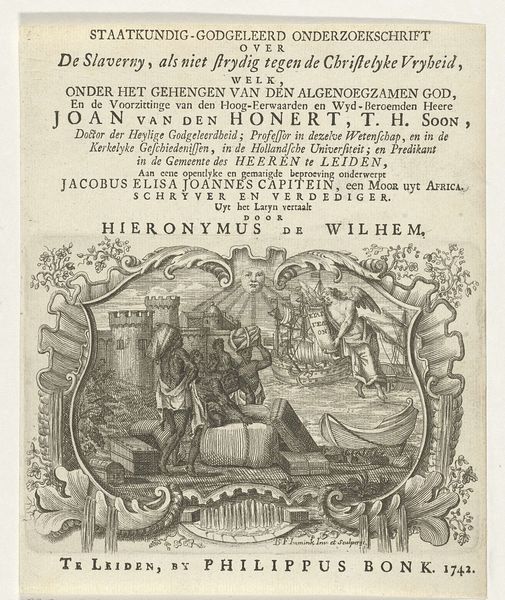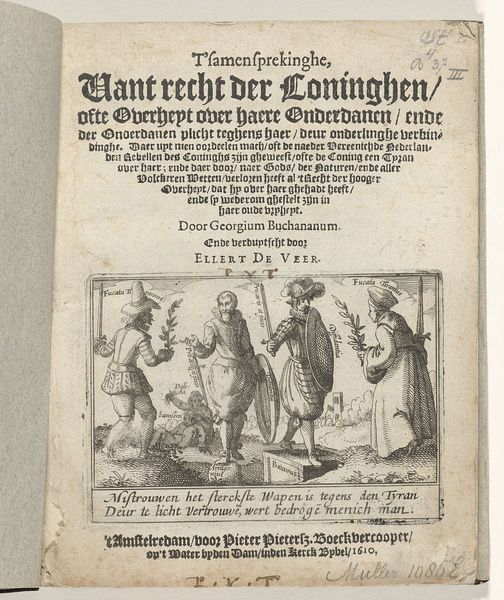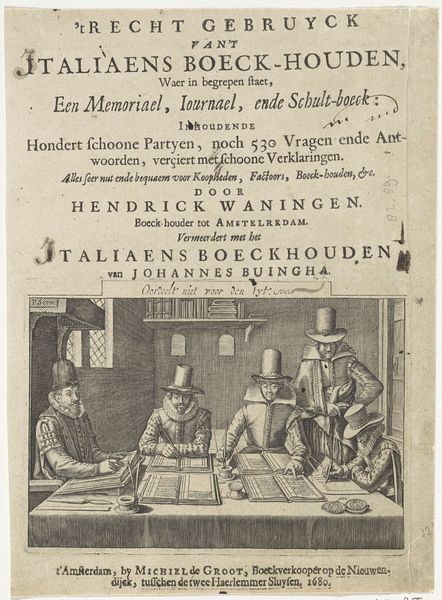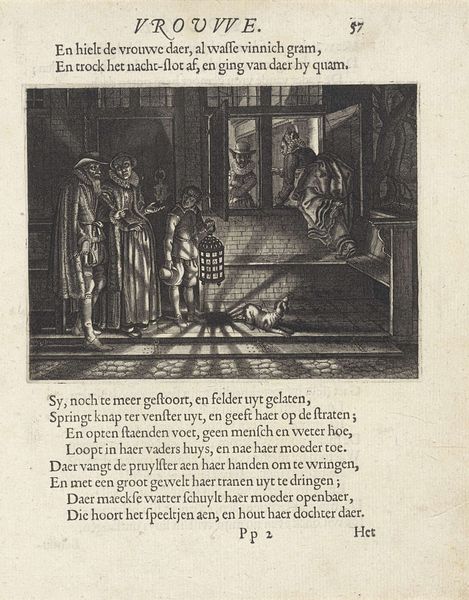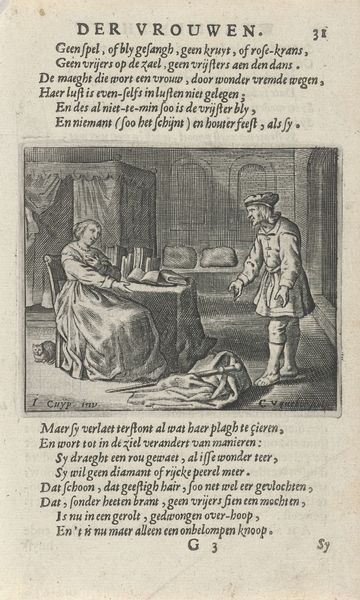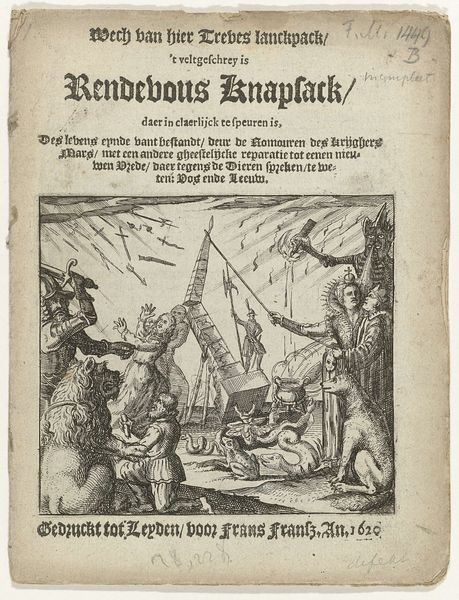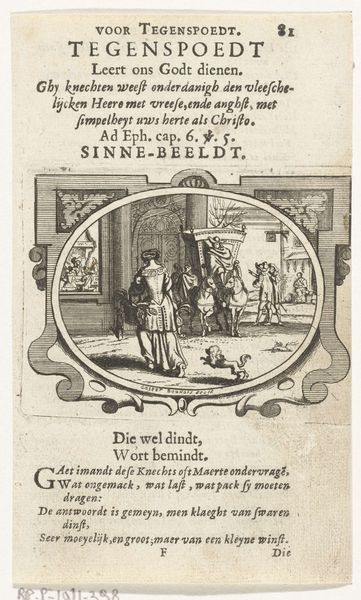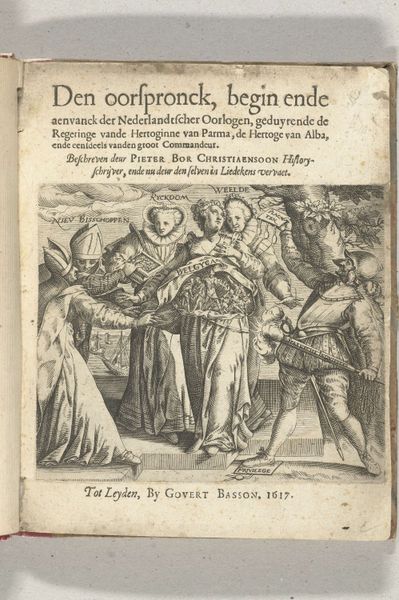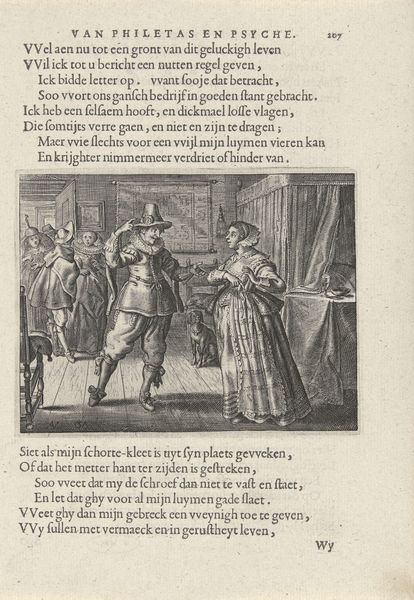
print, engraving
#
narrative-art
#
dutch-golden-age
# print
#
old engraving style
#
genre-painting
#
engraving
Dimensions: height 173 mm, width 128 mm
Copyright: Rijks Museum: Open Domain
Curator: "Boze vrouwen rondom schrijver," or "Angry Women Around a Writer," a print created in 1670 and residing at the Rijksmuseum, confronts us. It looks like an illustration for some kind of pamphlet. What leaps out at you? Editor: Immediately, the density. So many figures crammed into this tiny space, each with such a clearly defined grievance. It's almost claustrophobic, you can almost hear the accusations buzzing around the central figure. Curator: It's interesting that you feel that intensity because, compositionally, it is quite balanced. We have these two clusters of figures facing off across a table at which a seated scribe sits, presumably recording the women's woes. Editor: But balanced doesn't necessarily equal harmonious, right? Look at those little word balloons rising from each figure. You almost get a sense of chaotic cacophony— everyone vying to have their say, layering over each other, no resolution possible. Curator: It certainly feels rife with discord. Considering this was the Dutch Golden Age, with its emphasis on order and prosperity, such direct criticism— aimed, at least superficially, at misogyny as it seems to be--was pretty gutsy. Editor: Right, you've got Joseph Swetnam's name associated with this piece as well, and it's published anonymously in Dutch and supposedly translated from the English. Could that have something to do with that apparent 'gutsy' element we're picking up on, like hiding in plain sight? Curator: Yes, the original publisher Michiel de Groot probably printed this one under a pseudo-anonymous title from an infamous misogynist to give it an intriguing edge! It speaks to a savvy understanding of the market, almost like using outrage as a marketing tool. And also how effective that particular narrative remains relevant even centuries later. Editor: In conclusion, this work provides much to mull about, reflecting themes of historical misogyny as well as the savvy use of iconography and wordplay of the publisher to spread a specific type of political narrative. Curator: Ultimately it seems art has, yet again, found an interesting way to invite us into that eternal, cyclical human drama: who’s wronged whom, and who’s got the ears of power?
Comments
No comments
Be the first to comment and join the conversation on the ultimate creative platform.
